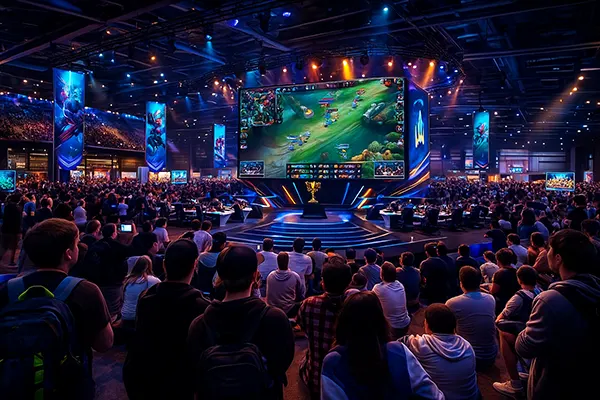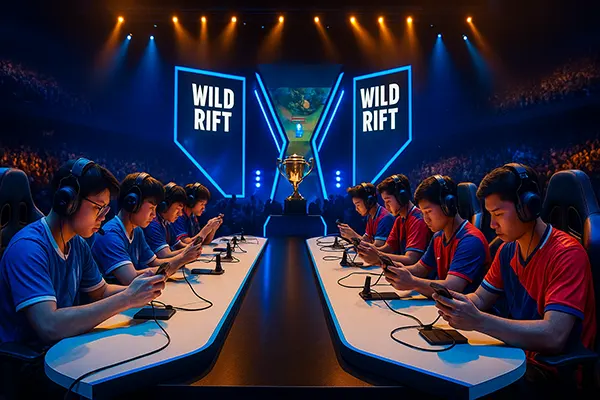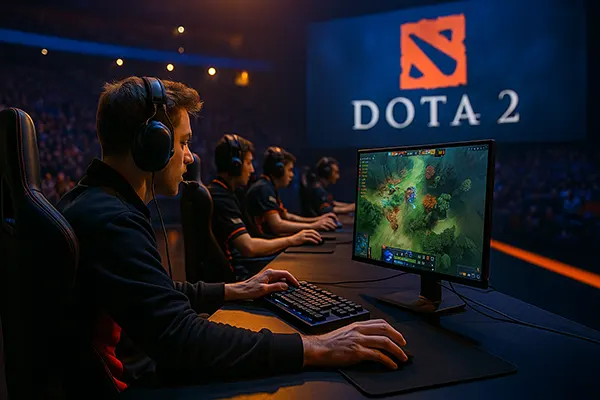LoL Mobile Esports in 2025: Why Wild Rift Is Returning and How It May Influence the Main Esports Scene

In 2025, Wild Rift is regaining strategic relevance within the mobile esports ecosystem. After several muted seasons, the title is entering a renewed phase driven by stable regional leagues, consistent publisher support and a clear focus on competitive integrity. This shift reflects the rapidly growing influence of mobile-first regions, where the spectator base and player activity continue to exceed traditional expectations and reshape the global esports hierarchy.
The Renewed Structure of Wild Rift Esports in 2025
Wild Rift’s 2025 ecosystem is built on long-term league stability rather than short-lived invitational formats. Riot Games has reintroduced regional circuits across Southeast Asia, Brazil and MENA with fixed seasonal calendars, transparent qualification paths and year-round team commitments. This consistency has made the scene more predictable for organisations, broadcasters and sponsors who previously struggled with inconsistent scheduling.
An important distinction in 2025 is the shift toward infrastructural investment. Organisations operating in Wild Rift today are required to provide minimum support standards such as coaching staff, sports psychologists and reliable training facilities. These requirements were previously optional, resulting in uneven competitive quality. Standardisation has significantly narrowed the skill gap and raised the competitive ceiling.
The global tournament format has also been redefined. Instead of one large world championship, Wild Rift now operates a multi-stage system similar to major traditional esports. Regional champions advance through intercontinental play-ins before reaching the core championship stage, creating more narrative depth and allowing underdog regions to demonstrate measurable progress throughout the year.
How Team Development Models Have Changed
Team development in 2025 focuses on maintaining stable rosters and structured training routines. Organisations no longer rely on frequent roster swaps; instead, they invest in long-term player development, which has improved strategic synergy within matches. Tactical depth has visibly increased, particularly within macro play and objective coordination.
Support for younger players has also expanded. Regional leagues now offer talent programmes where aspiring competitors receive supervised training under licensed coaches. These systems help maintain a steady flow of skilled newcomers, reducing the volatility that previously hindered roster continuity.
Performance analytics play a much larger role than in earlier seasons. Teams use detailed match data—tracking rotations, vision setups and combat efficiency—to form repeatable strategies. This analytical approach mirrors methods used in top-tier PC esports and further contributes to Wild Rift’s evolving professionalism.
Why Wild Rift Is Returning Stronger in 2025
Several external factors have contributed to Wild Rift’s resurgence. Mobile device performance in emerging markets has improved dramatically, enabling more players to experience stable gameplay without hardware limitations. Improved connectivity has also reduced latency issues that previously held back competitive environments.
Riot Games has implemented consistent content updates aligned with competitive metas. Balance patches, champion releases and item adjustments arrive on predictable schedules, ensuring teams have adequate preparation time. This stability is highly valued among professional coaches who must prepare tactical frameworks for long tournament cycles.
Broadcasting quality has reached new standards in 2025. Production teams include dedicated observers trained specifically for Wild Rift, offering clearer storytelling during team fights, objective trades and lane movements. Enhanced viewer accessibility has helped the scene grow beyond established mobile gaming communities.
Community and Market Influence
The community surrounding Wild Rift is significantly more organised than in previous years. Regional fanbases actively support local teams, contributing to steady viewership numbers across tournament phases. This engagement has made Wild Rift one of the stronger mobile esports titles in terms of long-term audience retention.
Market demand has shifted as well. Sponsors in telecommunications, fintech and hardware sectors view mobile esports as a sustainable gateway to younger audiences. Since Wild Rift now offers stable schedules, partnerships have become multi-season agreements rather than short-term branding experiments.
The presence of established esports organisations returning to the title has added credibility. Teams with strong histories in PC esports bring their brand recognition, structured training systems and established fanbases, accelerating the professionalisation of the mobile scene.

How Wild Rift May Influence Mainstream Esports
Wild Rift’s momentum in 2025 provides valuable indicators for the broader industry. Mobile esports is proving that competitive ecosystems can thrive outside traditional PC environments, especially in regions where mobile hardware dominates everyday entertainment. This shift has encouraged tournament organisers to reconsider how they distribute investment across different gaming platforms.
Player development pipelines within Wild Rift offer insights that PC teams are beginning to adopt. Shorter match durations and high-tempo gameplay create fertile grounds for coaching reaction time, coordination and adaptability. Some PC teams are already integrating mobile-based drills into their training routines, recognising the transferable skills.
Another key influence is the expansion of global audience demographics. As Wild Rift grows, regions historically underrepresented in mainstream esports gain visibility. Their success challenges traditional power dynamics and encourages publishers to support more inclusive international formats across all competitive titles.
The Future: Integration or Separation?
In 2025, analysts debate whether Wild Rift might eventually be integrated more deeply into the structure of major esports events. Some believe cross-promotional tournaments and shared venue schedules could amplify both scenes, particularly during international events where audiences overlap.
However, others argue that mobile esports should remain distinct to preserve its unique identity. Mobile communities have different viewer habits, competitive rhythms and engagement patterns compared with PC esports. Over-integration could dilute the authenticity of either ecosystem.
The likely path forward is a hybrid approach. Wild Rift will maintain its independence while occasionally aligning with major event cycles. This balance would allow the title to develop organically while still contributing to the evolving shape of global esports frameworks.


